10 Statistics on Dog Adoption in 2023

More dog owners than ever before are choosing to adopt instead of shop. As a result, there are fewer dogs in shelters, fewer dogs being euthanized, and fewer strays. Of course, we’re still a long way from seeing empty shelters, but we have high hopes for more improvements in 2023.
Here, we’re reviewing what dog adoption has looked like over the past few years, and clearing up some common misconceptions about the pet adoption industry. Keep reading to learn more!

What is Dog Adoption?
Dog adoption is the process of acquiring a dog from an animal rescue, shelter, or humane society. The popular alternative to dog adoption is buying a dog from a breeder. In some cases, pets may be adopted interpersonally and not through a formal adoption or rescue agency. For example, one might agree to take over responsibility for a friend or family member’s dog.
How Common is Dog Adoption?
Approximately 23% of dogs are adopted from shelters or humane societies, with an additional 6% found as strays. During the pandemic, adoption rates skyrocketed, with approximately 1-in-5 American households adopting a dog between March and November 2020.
How To Adopt a Dog in the US
The easiest way to adopt a dog in the U.S. is to visit your local animal humane society, shelter, or animal control center. Essential community resources, these shelters help to prevent animal homelessness, support underserved pet owners, and bring vital education and medical services to pet owners without access to adequate resources.
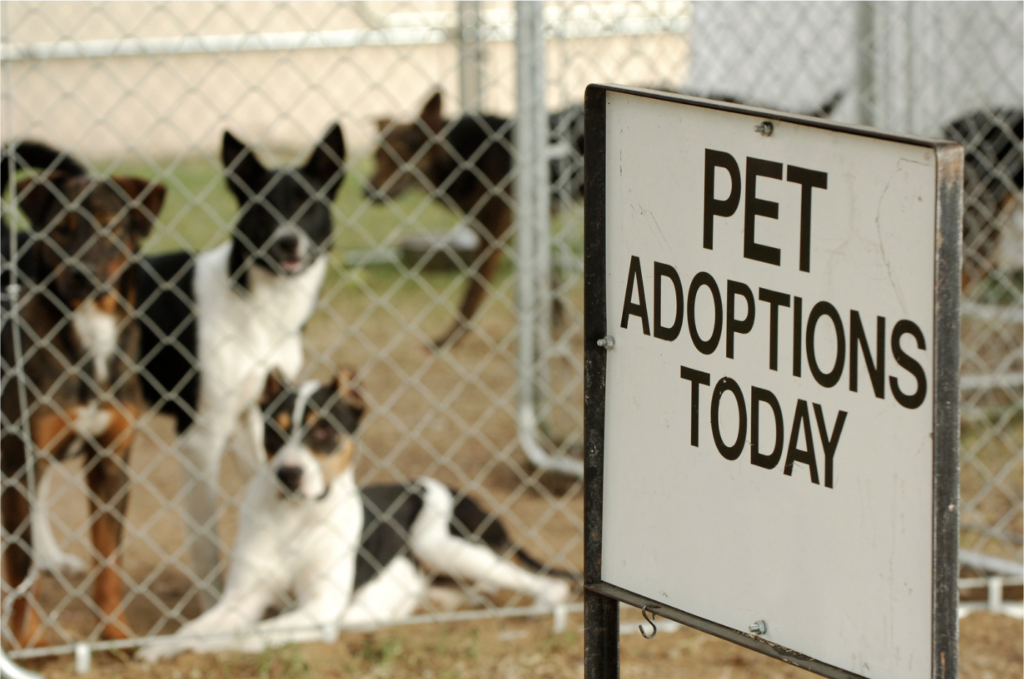
When you visit a pet shelter, you’ll usually be offered the chance to look around, and request a visit with the dogs that catch your eye. If you find the right pup, you’ll fill out an application, undergo a short interview, and pay the adoption fee.
Some shelters require a short waiting period, while others will send you home with your new dog the same day.
Some important qualifications to adopt a dog include:
- Must be over 18 (21+ in some states)
- Valid identification
- Proof of residency
- Proof of permission from a landlord or property management company (if renting)
 Top 10 Dog Statistics in 2023
Top 10 Dog Statistics in 2023
It’s time to look at some cold hard data! It’s one thing to talk about the concept of dog adoption, but it’s another to see the actual numbers. Here’s the current state of dog adoption in the U.S. as of the beginning of 2023.
1. Approximately 3.1 million Dogs Enter Shelters Each Year

While the numbers may seem shocking, 3.1 million is a significant decline from just a decade or so ago, when nearly 4 million dogs enter shelters each year. Of the 3.1 million dogs in U.S. shelters annually, approximately 700,000 return home to their owners.
Because most animal surrenders are due to unforeseen and uncontrollable circumstances, many shelters now offer programs that give dog owners in crisis a path to reuniting with their pets. Owner surrenders only account for about 25% of the dogs in animal shelters each year.
2. According to the ASPCA, Two Million Dogs are Adopted Each Year
Of the 3.1 million dogs that enter shelters annually, around 2 million are adopted to new homes. Adopted dogs account for around 23% of all dogs in U.S. households, with the majority (34%) purchased from breeders.
There are more than 78 million dogs in homes throughout the U.S., and approximately a quarter of these companion animals are acquired via an animal shelter or humane society.
3. Dog Ownership Has Grown by 39% Over the Last 10 Years
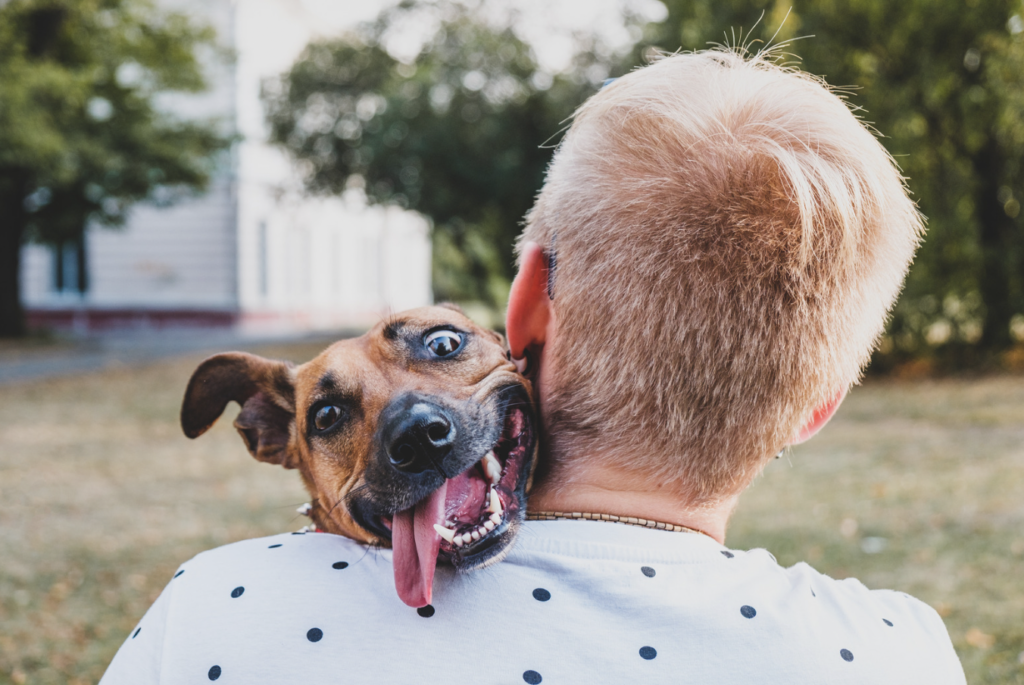
Dogs haven’t always been as popular as they are today, and rates of dog ownership have soared by a staggering 39% in the last decade. Dogs are so popular that 37-47% of American households have at least one dog as a pet.
4. 47% of Dog Surrenders are Due To “Pet Problems”
Nearly half of owners surrendering their dogs to shelters cited “pet problems” as their reason for surrender. “Pet problems” encompass behavioral “issues” including reactivity, going potty in the house, excessive barking, separation anxiety, and so on.
The term “pet problems” is also used to refer to an owner who purchased or adopted a dog whose size they didn’t account for.
5. There Are More than 4,400 Animal Shelters in the U.S.

This number accounts only for brick-and-mortar shelters and does not include foster-run rescues that operate almost entirely online and via the homes of volunteers. In combination, these humane organizations spend around $3 billion annually.
6. Only 5% of Dogs in Shelters are Purebred
Many people incorrectly believe that upwards of 25% of all shelter dogs are purebred. Categorically false, the numbers lie somewhere closer to 5%. This misconception is likely due to well-intentioned but misleading campaigns intended to attract more adopters to shelters and humane societies.
While you can find a purebred dog at an animal shelter, the vast majority, about 95%, are mixed-breed dogs.
The number of purebred dogs in shelters would actually be much lower were it not for the two most common breeds found in animal humane societies: Pitbull type dogs and Chihuahuas. These two breeds account for 1.7% of all purebred shelter dogs, and are disproportionately abandoned, abused, and euthanized.
7. Public Perception of Rescue Dogs is Changing
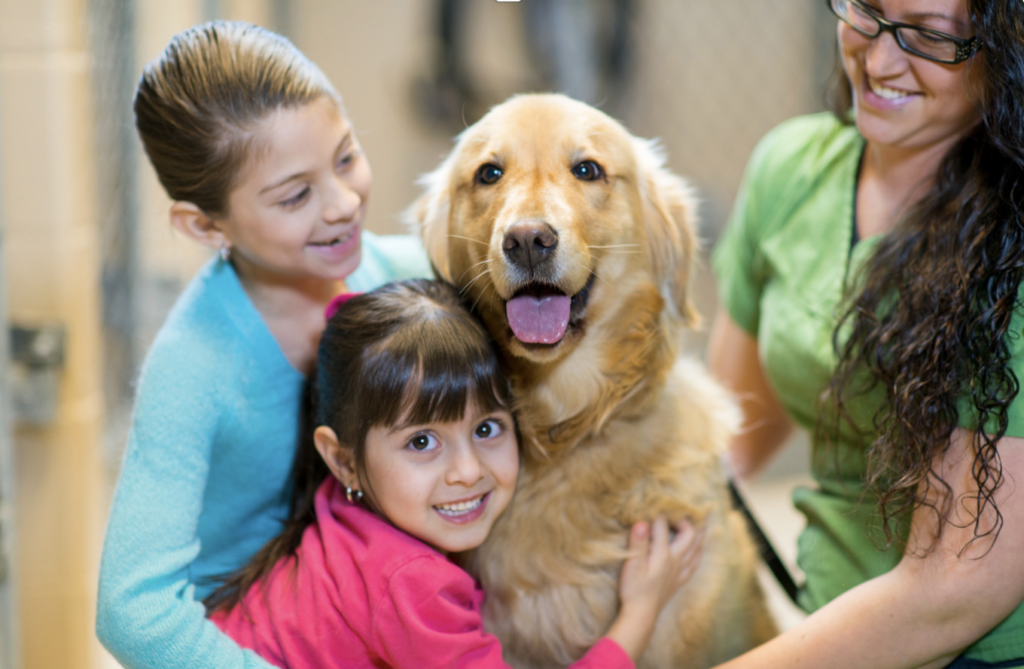
Adopting a dog is no longer just the “affordable option,” and many Americans now see pet adoption as the more ethical path to dog ownership. Rescuing a dog has become so popular in the U.S. that many once-acceptable breeding practices have become frowned upon.
8. Nearly 1-in-5 Households Adopted a Pet During the Pandemic
With millions suddenly stuck at home with extra free-time thanks to the COVID-19 pandemic, pet adoption rates reached an all-time high. Approximately every 1-in-5 American households (about 23 million) adopted a dog during the pandemic, spending nearly $50 billion on pet products and food from March-November 2020.
9. Labs are One of The Most Common Purebred Dogs Left in Shelters
Based on genetic testing, Pitbulls (including American Pitbull Terriers, American Bullies, etc.) are overwhelmingly the most common purebred dogs in shelters, followed by Chihuahuas and Poodles.

Labs and Doodle-type dogs are also relatively common since they are some of the most purchased breeds in the U.S. However, the vast majority of dogs identified as purebred by shelters are mixed breeds. In fact, shelter staff misidentify the primary or secondary breed in shelter dogs more than 65% of the time.
10. Each Year Approximately 390,000 Dogs are Euthanized in the U.S.
Although the numbers sound shocking, they are a significant reduction from previous years. More stray dogs than ever are being successfully reunited with their owners, and many shelters have begun offering a path to reunification for dog owners who need to surrender their pets due to economic or personal reasons.
Increased resources for pets and pet owners living in underserved communities have also reduced the overall rate of stray and owner surrender intakes. Approximately 22 million American pets live in underserved communities where healthy food, quality veterinary care, and even pet stores are severely limited.
Benefits of Adopting Over Buying
There are the obvious benefits of adopting vs. buying, like helping a dog in need or spending a little less money. You already know about those, so let’s talk about some of the hidden benefits of adopting a dog.
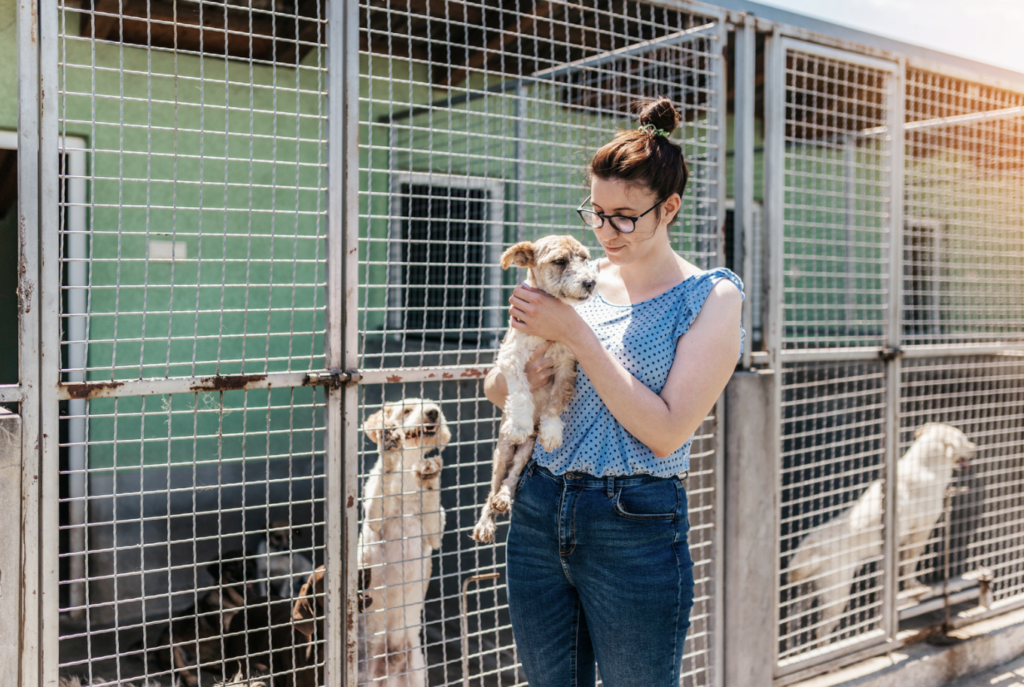
Less Training
One of the reasons many people choose to buy a dog instead of adopting is because they think they’ll have more control over their dog’s temperament. While it is true that being with a dog from the time they’re a puppy can give you the chance to shape their experiences, their temperament and personality aren’t something you can control. Additionally, you won’t even know what their personality looks like until they’re an adult.
When you buy a puppy, you’re also responsible for teaching it literally everything. Unless you’re a dog trainer, it’s really easy to teach your pup bad habits, make small mistakes, etc.
When you adopt a dog, you usually adopt an adult whose personality is already developed. If the dog was an owner surrender, they also are probably already socialized, and potty trained. Even if they were a stray, spending time at a shelter with other dogs in a play group, and working with staff on training can reduce the time you spend training your adopted dog at home.
Fewer Medical Bills
Most adoption fees cover veterinary bills like vaccinations, spay/neuter, and even some minor surgeries. Some rescues even offer long-term medical coverage for dogs adopted from their network, and may even cover the cost of medication for chronically ill dogs.
Where To Adopt A Dog
With more than 4,000 dog rescues and adoption agencies around the country, your options are virtually endless for adopting a dog. We recommend starting with your local humane society or animal control. These rescues are perpetually in need of adopters and serve as a vital community resource that is worth supporting.
The ASPCA shelter database will help you locate a local shelter. You can also visit your city/municipality’s website for information on local animal care and control centers.
A quick Google search will also deliver plenty of information, including local rescue groups and humane societies.
How To Choose The Right Dog For Your Family
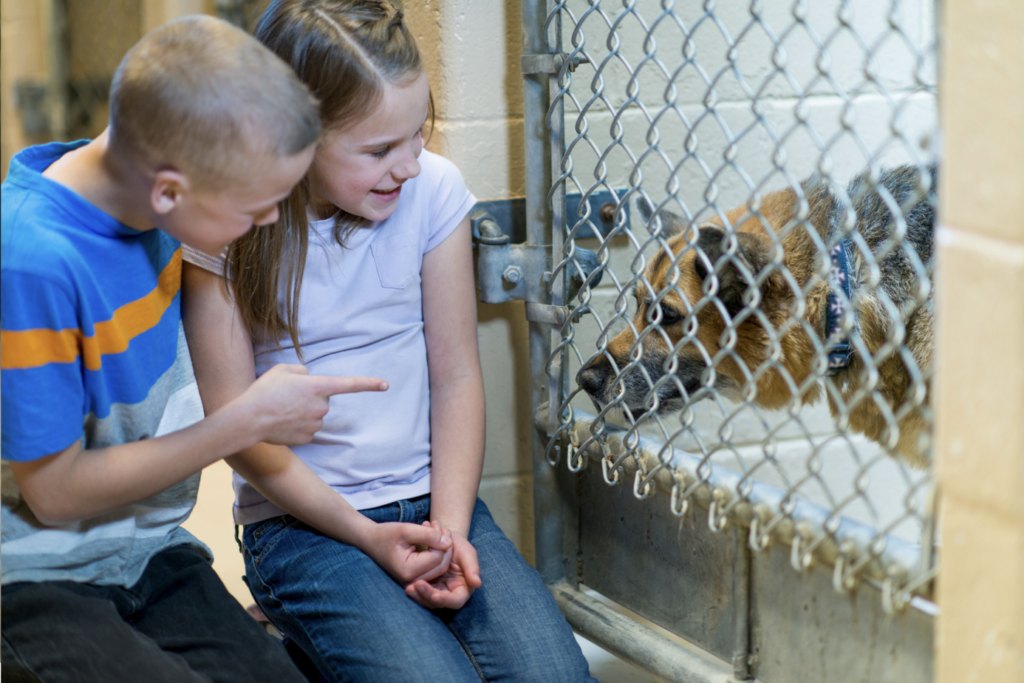
Don’t let yourself fall into the trap of aesthetics when choosing a dog for your family. Sure, you might have a favorite dog breed, but is that breed actually right for your lifestyle? Here are some important questions to ask and considerations to make before you commit to a dog.
- How much time do you have for your new dog? Puppies and young dogs require a lot of attention and aren’t something you can commit to lightly. Similarly, certain breeds are known for being high-energy and requiring a lot of exercise/stimulation.
If you don’t have much time, you should be looking for a calm, adult, couch potato dog that likes to spend their time sleeping, not a new puppy. - Do you have kids? How old are they? If you have small kids, you need to be extremely careful when choosing a dog, and that dog should never be left unsupervised with your kids. Even the best, most perfectly trained dog can hurt a child unintentionally, and kids aren’t exactly known for being gentle or good with impulse control.
Before you get a dog, assess your children’s ability to control themselves, respect boundaries, etc., and keep these qualities in mind when searching for the right dog. - Where do you live? If you live in a third-floor apartment, you probably won’t want a dog who needs to run for two hours every day or takes up an entire couch by themselves. Similarly, if you live on a farm, you probably want a dog that can handle being outdoors, and is known for being confident and calm. Your home environment dictates a lot of your lifestyle.
- How much experience do you have with dogs? It’s important not to put yourself in a situation that you cannot handle. Dog ownership isn’t an intuitive process, and it can take years to become an adept trainer and handler. If you are a first-time dog owner, this is something to take into consideration when choosing a dog, since you’ll want one with a calmer temperament.
Similarly, it’s important to listen to experts about dog breed traits. While breed can’t account 100% for personality or behavior, it can be a major factor. For example, as a first time dog owner, you absolutely should not purchase a German Shepherd or Belgian Malinois, but you would probably do well with a Lab or a Shih Tzu.
Dog Adoption Statistics 2023 FAQs

Do you have questions about this year’s dog adoption statistics? Let’s cover some of the most common questions now.
1. What Percentage of Dogs are Not Adopted?
According to statistics for the past few years, only around 10-20% of shelter dogs were not adopted and instead euthanized. In years past, this percentage has been much higher—as much as 50-60%—and has fluctuated tremendously from year to year.
2. What is the Least Likely Dog to get Adopted?
Black Pitbulls with cropped ears are the least likely dogs to get adopted. Black dogs, regardless of breed, are generally considered less adoptable due to unintentional societal and aesthetic bias.
3. Which Dog Breeds Get Adopted the Most?
Pitbulls are by far the most commonly adopted breed and the most commonly abandoned breed. Interestingly, they are also the least likely to get adopted due to sheer volume.
4. Which Dog Breeds Are Most Common At Shelters?
The most common breed found at shelters is the Pitbull, which includes the various breeds under the Pitbull umbrella. Pitbulls are both the most common purebred dog and the most common mixed breed dog found in shelters.
Chihuahuas, Poodles, Beagles, Labs, and German Shepherds are also common in U.S. shelters, though most are mixed breeds.
You can also read about “Why Fostering Is So Important” HERE!
Sources:
- ASPCA
- ASPCA / Pet Keen
- The Zebra
- ASPCA National Survey
- The Humane Society of the United States
- National Animal Interest Alliance
- Pet Pedia
- Washington Post
- Smithsonian Magazine
- ASPCA / The Humane Society of the United States



